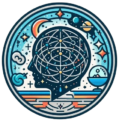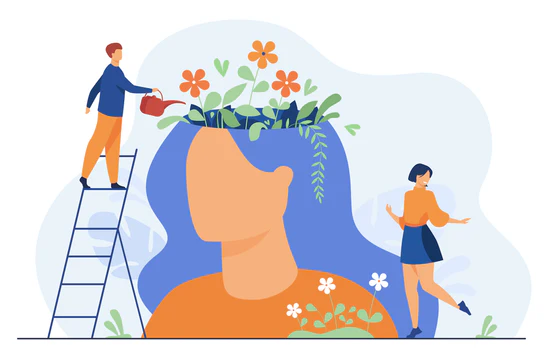If you’ve ever opened TikTok “just for five minutes” and somehow found yourself two hours deep, eyes glazed, thumb still scrolling — congratulations, you’ve experienced what psychologists now call attentional capture. It’s not just a bad habit; it’s a rewiring of how our brains allocate focus, reward, and memory.
The rise of short-form content — from TikTok to Instagram Reels to YouTube Shorts — isn’t just changing entertainment. It’s reshaping the psychology of attention itself.
Read More: Sleep and Mental Health
The New Attention Economy
Attention has always been valuable, but in the 21st century, it’s the currency of the internet. Apps like TikTok are designed to maximize what cognitive scientists call “intermittent reinforcement” — the same principle that keeps gamblers glued to slot machines. Every swipe might deliver something funny, shocking, or heartwarming — and that unpredictability keeps the brain hooked (Berridge & Robinson, 2016).

Neurologically, each “rewarding” clip triggers the release of dopamine, the brain’s feel-good neurotransmitter. Over time, this creates a powerful feedback loop: the brain starts craving more novelty, faster. As media psychologist Larry Rosen notes, “The more stimulation you feed your brain, the more it wants — and the shorter the bursts it prefers” (Rosen, 2017).
The Fast-Food Model of Attention
Short-form content works like cognitive junk food. It’s quick, instantly gratifying, and easy to consume — but it leaves the brain craving another hit.
Psychologist Gloria Mark’s research shows that the average attention span on a screen task dropped from 2.5 minutes in 2004 to about 47 seconds in 2023 (Mark, 2023). This doesn’t mean humans have become less intelligent — it means our attentional environment has become more fragmented.
Our brains evolved to focus on one task at a time, but the digital landscape encourages micro-switching — jumping rapidly from one piece of content to another. Each switch comes with a “cognitive cost,” forcing the prefrontal cortex to reset again and again (Rothbart & Posner, 2015). Over time, that can lead to mental fatigue and reduced sustained attention.
The Infinite Scroll and the Dopamine Loop
TikTok’s most brilliant — and dangerous — invention isn’t the video; it’s the infinite scroll. Unlike older platforms where you had to choose what to watch next, TikTok removes decision-making altogether. The algorithm decides for you, optimizing not for what’s best, but what keeps you watching longest.
This creates a variable reward schedule — you don’t know when the next “great” video will appear, so you keep scrolling. It’s the same psychological mechanism that drives gambling addiction (Ferster & Skinner, 1957).
Each microdose of dopamine is fleeting, so the brain chases another — and another. Over time, this trains neural pathways toward novelty-seeking and away from deep engagement. The result? Our capacity for focus and boredom tolerance shrinks.
The Attention Fragmentation Problem
Neuroscientists are increasingly concerned about what some call the “fragmented mind.” When the brain becomes accustomed to rapid, high-intensity stimulation, slower forms of focus — like reading a book or writing — can feel unbearable.
Cognitive neuroscientist Earl Miller explains that multitasking (or rapid task-switching) “feels productive but actually reduces performance and comprehension” (Miller, 2018). This is because the prefrontal cortex, responsible for decision-making and focus, can only truly handle one cognitive task at a time.
In children and teens, where the brain’s attentional networks are still developing, this kind of overstimulation can have long-term effects on executive functioning and self-regulation (Christakis & Moreno, 2009).
The TikTok Generation and Mental Health
TikTok’s influence extends beyond attention—it’s also altering emotional regulation. The constant flood of new stimuli trains the limbic system to expect high arousal states. When offline reality fails to provide the same intensity, users may feel bored, restless, or anxious.
A 2025 study found that problematic TikTok use was linked with attention-deficit symptoms and emotional dysregulation among young adults (Sun et al., 2022). The app doesn’t just shorten attention; it also conditions emotion.
And yet, TikTok isn’t purely harmful. For many users, it offers community, creativity, and comfort. Its algorithm can expose people to uplifting or educational content they might never seek out otherwise. Like most technologies, its impact depends on how consciously we use it.
The Psychology of Reclaiming Focus
The good news? The brain is remarkably plastic. Just as it can be trained into distraction, it can be retrained into focus. Psychologists suggest several science-backed strategies for reclaiming attention:
- Monotask, don’t multitask. Focus on one task at a time — no split-screening between videos and texts.
- Practice “dopamine fasting.” Take deliberate breaks from rapid-reward environments to reset your brain’s baseline.
- Schedule boredom. Allow your mind to wander; that’s where creativity and problem-solving thrive (Smallwood & Schooler, 2015).
- Mindful scrolling. Set a timer or intention before opening apps. Use content consciously, not compulsively.
- Rebuild deep focus. Reading, journaling, or meditating regularly can re-strengthen neural circuits for sustained attention.
The Bigger Picture
Ultimately, the “TikTok brain” isn’t about demonizing social media — it’s about understanding how environments shape cognition. Our brains are not fixed; they adapt to whatever diet of information we feed them. The question is, what are we training them for?
If we want to preserve deep thought, creativity, and self-reflection, we need to make space for slowness. The occasional scroll isn’t the enemy — but living entirely in the loop of 15-second dopamine hits might cost us the ability to focus long enough to discover what truly matters.
As psychologist Mihaly Csikszentmihalyi (1990) once wrote, “The quality of life depends on our ability to control attention.” In the age of TikTok, that might be the most radical act of all.
References
Berridge, K. C., & Robinson, T. E. (2016). Liking, wanting, and the incentive-sensitization theory of addiction. American Psychologist, 71(8), 670–679.
Christakis, D. A., & Moreno, M. A. (2009). Trapped in the net: Will internet addiction become a 21st-century epidemic? Archives of Pediatrics & Adolescent Medicine, 163(10), 959–960.
Csikszentmihalyi, M. (1990). Flow: The psychology of optimal experience. Harper & Row.
Ferster, C. B., & Skinner, B. F. (1957). Schedules of reinforcement. Appleton-Century-Crofts.
Mark, G. (2023). Attention span: A groundbreaking way to restore balance, happiness and productivity. Hanover Square Press.
Miller, E. K. (2018). The neuroscience of attention and the limits of multitasking. Trends in Cognitive Sciences, 22(7), 555–568.
Rosen, L. D. (2017). The distracted mind: Ancient brains in a high-tech world. MIT Press.
Rothbart, M. K., & Posner, M. I. (2015). The developing brain in a multitasking world. Developmental Review, 35, 42–63.
Sun, J., Liu, Q., Yu, S., & Wang, J. (2022). Problematic TikTok use and attention-deficit symptoms: The mediating role of emotion dysregulation. Computers in Human Behavior, 129, 107141.
Smallwood, J., & Schooler, J. W. (2015). The science of mind wandering: Empirically navigating the stream of consciousness. Annual Review of Psychology, 66, 487–518.
Subscribe to PsychUniverse
Get the latest updates and insights.
Join 3,020 other subscribers!
Niwlikar, B. A. (2025, November 2). TikTok Brain and 5 Important Ways to Reclaim Your Attention. PsychUniverse. https://psychuniverse.com/tiktok-brain/



